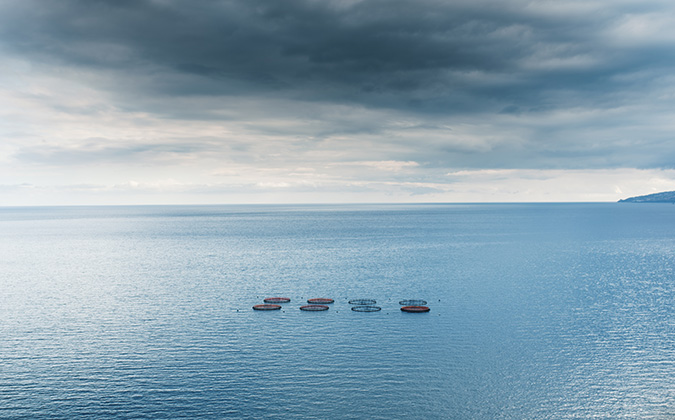
Submerged cages with air domes improve sea lice infestation but reduce welfare
Submerging Atlantic salmon sea cages with air domes can greatly reduce sea lice infestation levels, but this appears to come at a high cost.
Salmon growth and welfare may be negatively affected due to environmental conditions caused by the approach, according to new research carried out in Norway.
Numbers of sea lice affecting salmon can be reduced by producing the fish where sea lice are not normally found. A practice becoming more common in Norway is the installation of tarpaulin skirts or snorkels and submerging sea cages to create a physical barrier between the salmon and sea lice, which mainly reside in surface waters.
The main issue with this practice is that the salmon require frequent access to the surface to gulp air and fill their swim bladders in order to maintain buoyancy.
Air domes offer innovative solution
Fitting submerged cages with underwater air domes provides an underwater air surface for the salmon and keeps them away from sea lice.
These submerged cages with domes had never previously been tested over a full production cycle to understand the full effects of the practice, but that work has now been completed for the first time by researchers from the Institute of Marine Research in Norway and the University of Melbourne, Australia.
The scientists compared three cages of Atlantic salmon submerged to a depth of 15 meters alongside three standard surface cages over a 12-month period.
Lice reduction comes with caveats
Results showed differing lice-infestation levels, welfare and growth performance between control and submerged cages.
Submerged cages had 93% lower lice levels than controls. Swim-bladder fullness and swimming behavior showed that submerged salmon used the underwater air dome to maintain neutral buoyancy throughout the production cycle.
However, production parameters showed worse results in submerged cages than surface cages after 12 months. The average harvested weight, after processing at a commercial facility, was 2.8 kg for salmon in submerged cages, with 81% considered of superior quality. For salmon in the surface cages, the average harvested weight was 5 kg, with 92% considered of superior quality.
Importantly, overall mortality was 2.5 times higher in submerged cages compared to the controls, said the authors of the study, while welfare scores for eye condition and mouth jaw wounds were also worse in submerged cages than in surface cages.
Successful operation still possible
The researchers stated that the poorer production and welfare outcomes in submerged cages are likely to be due to the environmental conditions experienced deeper in the water, where colder water and/or lower oxygen levels for long periods may compromise growth.
The authors concluded that while submerging salmon in cages fitted with air domes can reduce lice infestation, the sub-optimal environments for fish growth and welfare must be managed properly. Therefore, submergence must be matched to farming sites and times when conditions at depth are most appropriate for production.
You can read the full journal article in Aquaculture.






